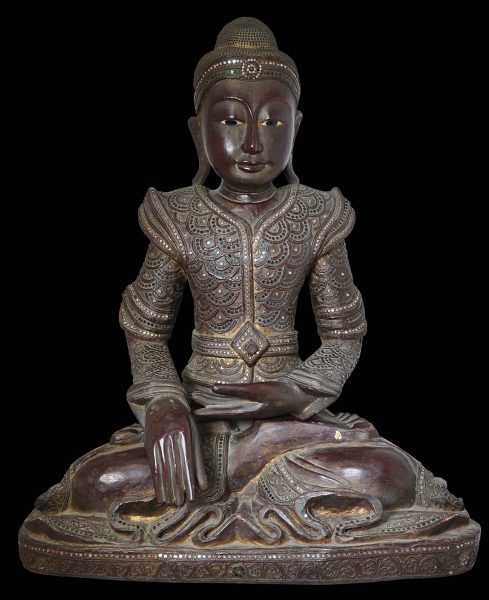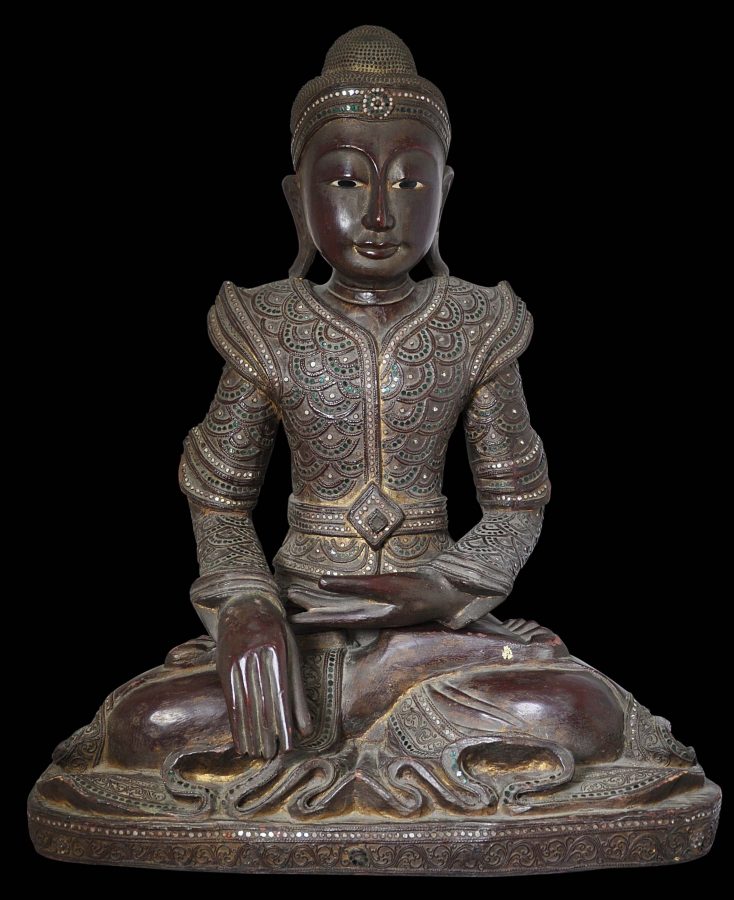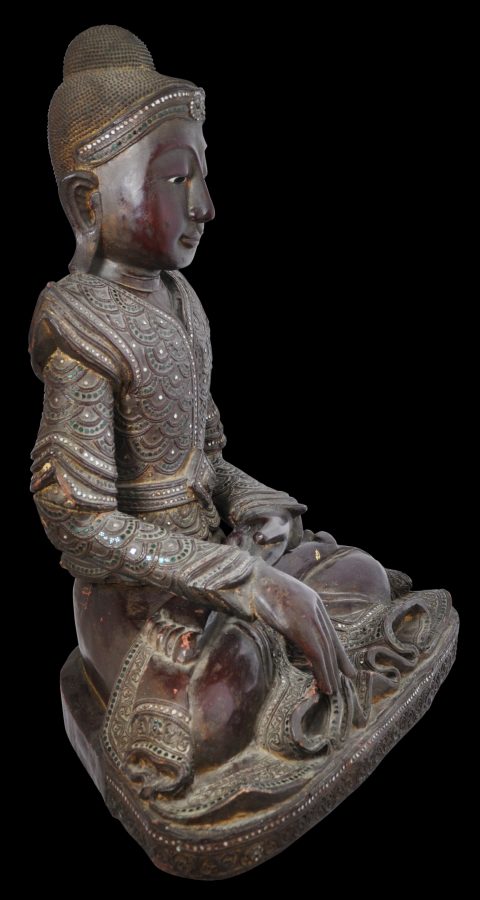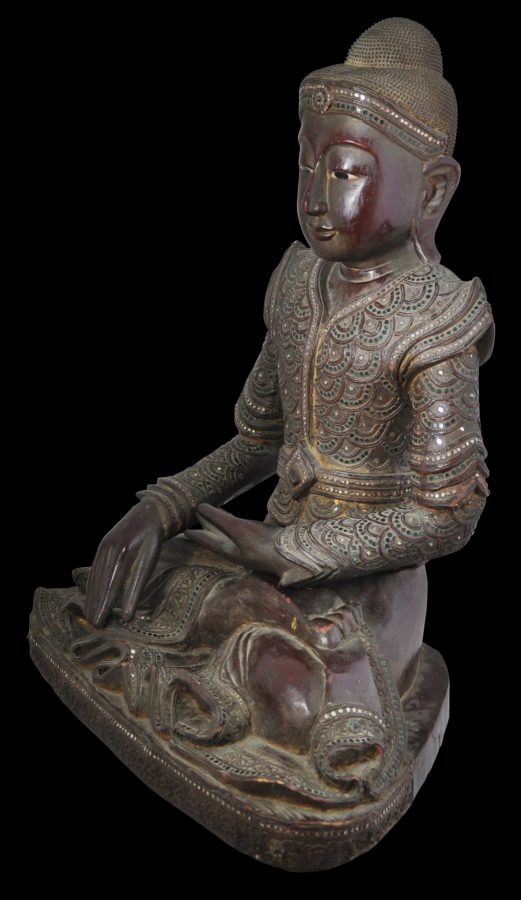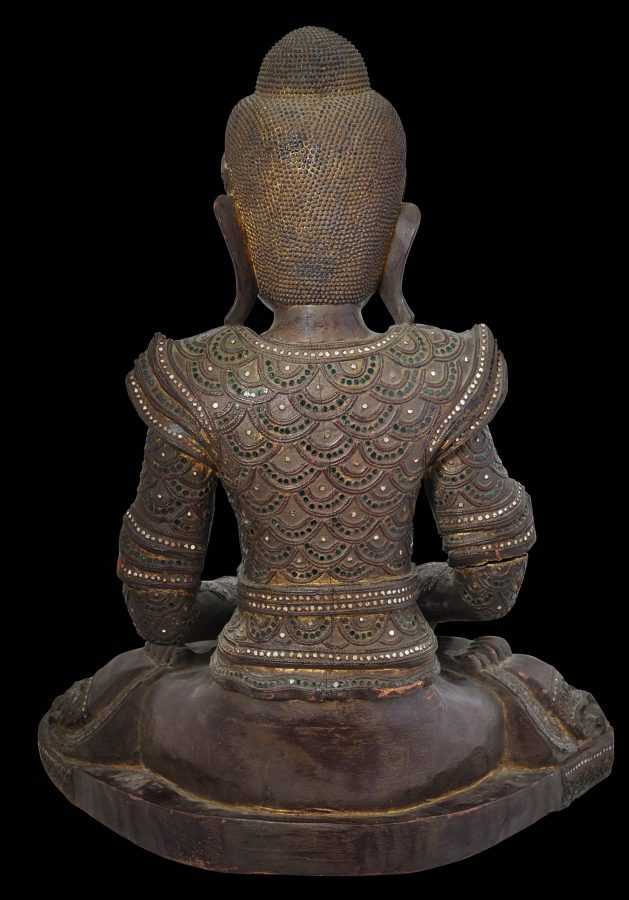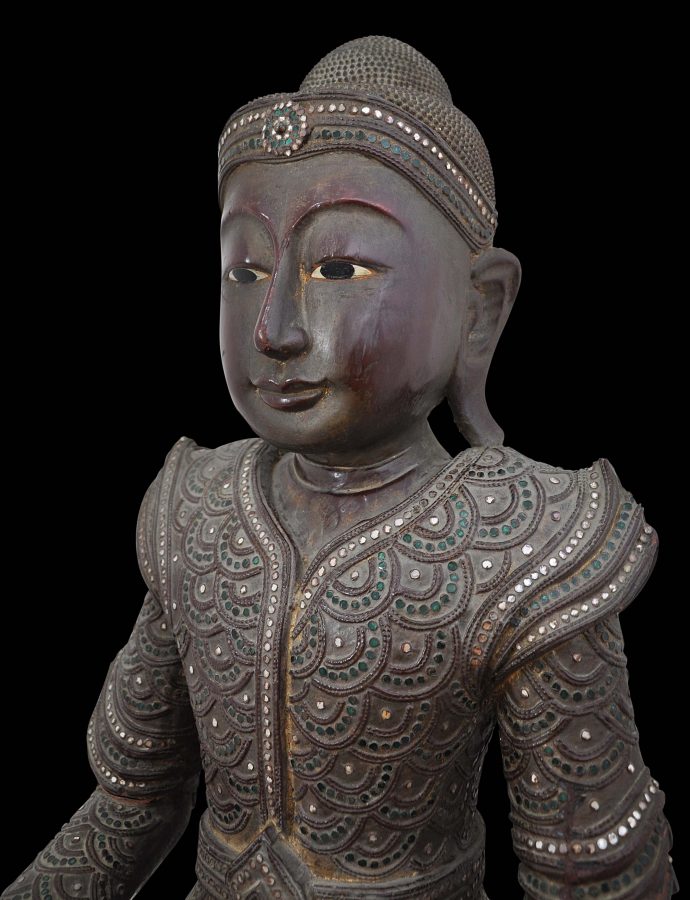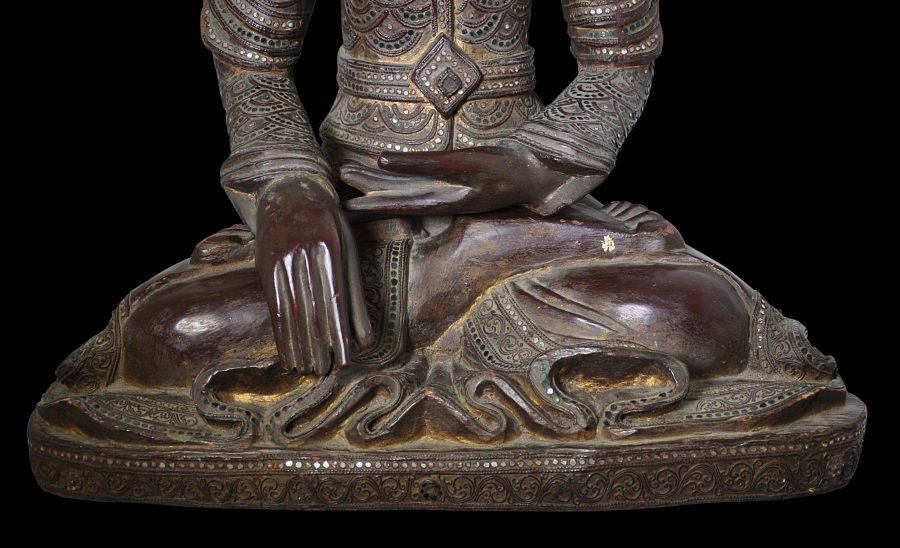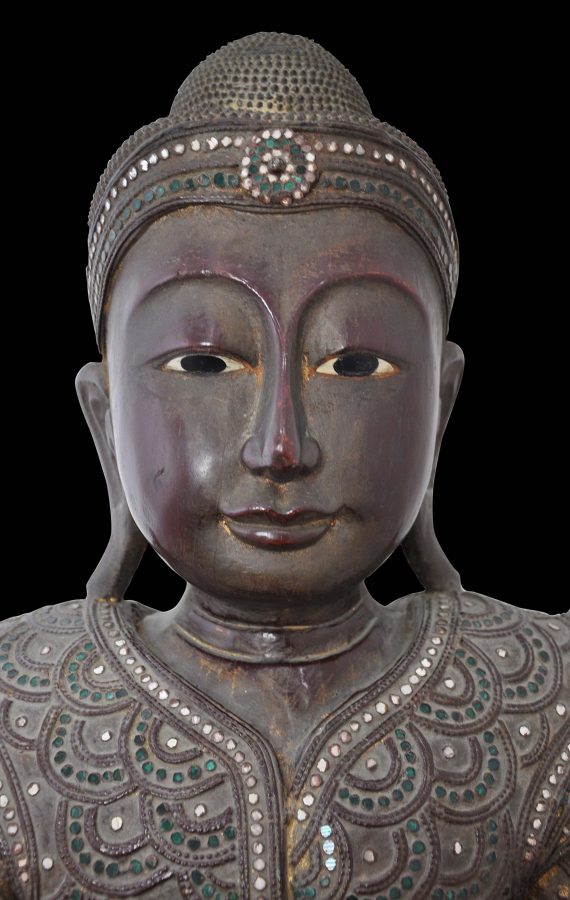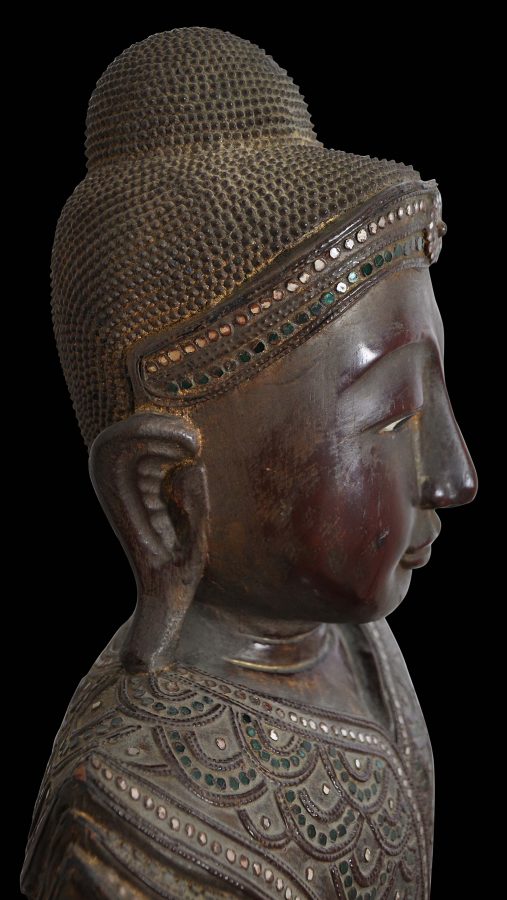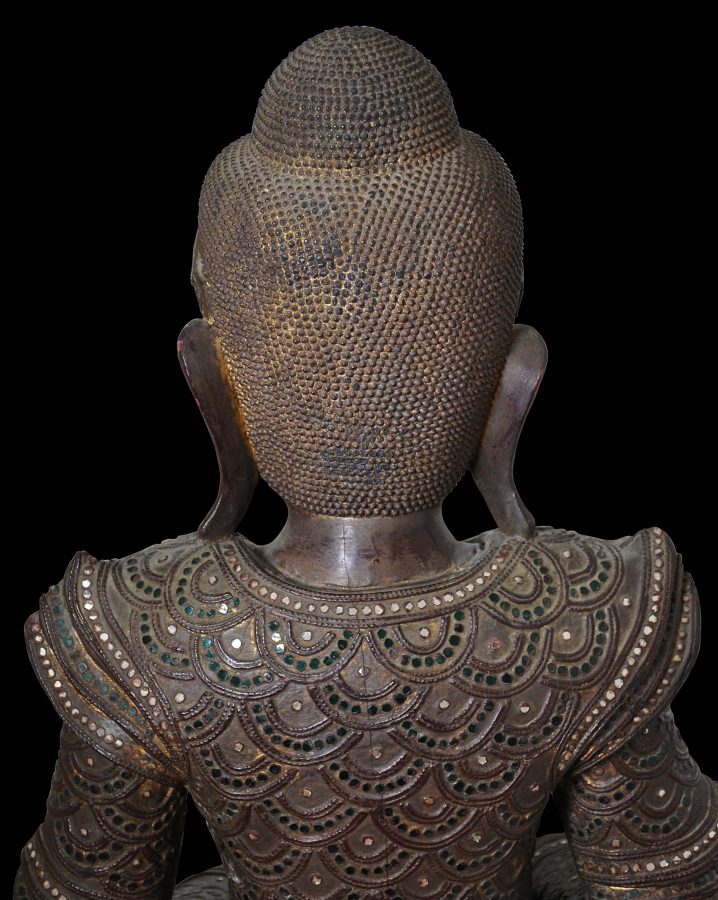Enquiry about object: 4450
Burmese Large, Lacquered Wooden Buddha
Mandalay, Burma circa 1850
height: 67.5cm, width: 59cm, depth: 34cm
Provenance
UK art market
This beautiful image of the Buddha most probably was carved in Mandalay in northern Burma. It has been carved in a naturalistic style, which is likely the product of colonial influence. It has been carved in wood, lacquered and inset with glass cabochon buttons, and glass fragments backed with green and silver foil (known as hman-zi- shwei-cha), and overlaid thayo work, a process whereby thin, rolled strands of lacquer and ash putty are applied in patterns. Traces of gilding also remain.
The image is in the Mandalay style and shows the Buddha seated in vajrasana, with his right hand gesturing to the earth in the bhumisparsa mudraposition. It is probably the most characteristic form of religious sculpture in Burma (Lowry, 1974). The posture, known as ‘calling the earth to witness’, represents the moment when the Buddha was seated in meditation under the Bodhi tree during the evening before his enlightenment. Mara asked him to name anyone who would give evidence that he had given alms, and the Buddha motioned to the earth with his right hand and said that the earth would bear witness to that – in a previous incarnation when he was known as Vessantara, he had given alms to such an extent that the earth had begun to quake.
The image shows the Buddha seated on a low platform or socle and dressed in ample robes with naturalistic folds and pleating. Earlier images of the Buddha across Southeast Asia tended to show the monastic robes in a much more schematic way.
The eyes have been inlaid with a white material, usually described as mother-of-pearl, with black pupils probably painted on with black lacquer.
The cranial protuberance (unisha) is rounded and the head decorated with tight curls in low relief. The curls are arrayed in a pattern on the back of the head, rather than being in a more typical, somewhat random manner.
Unusually, the image has been made in two halves which separate at the waist. This makes the image easier to transport and store.
Overall, the image is very sculptural and decorative: the naturalistic flow of the robes, and the refinement of the face, are particularly pleasing. The overall condition is very good. There is some weakness to the join of the right arm at the elbow, which is normal and due to some age-related shrinkage. But it is intact and stable. The image was acquired in the UK and almost certainly came to the UK during colonial times.
References
Fraser-Lu, S., Burmese Lacquerware, White Orchid Books, 2000.
Fraser-Lu, S., & D.M. Stadtner, Buddhist Art of Myanmar, Asia Society Museum, 2015.
Karow, O., Burmese Buddhist Sculpture: The Johan Moger Collection, White Lotus, 1991.
Green, A., & T.R. Blurton (eds.), Burma: Art and Archaeology, The British Museum Press, 2002.
Lowry, J., Burmese Art, Victoria and Albert Museum, 1974.
McGill, F. (ed.), Emerald Cities: Arts of Siam and Burma, 1775-1950, Asian Art Museum, 2009.


